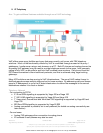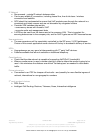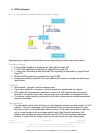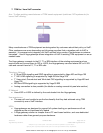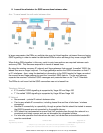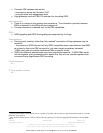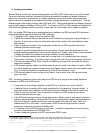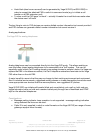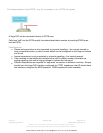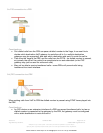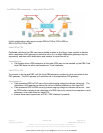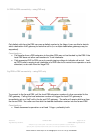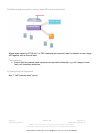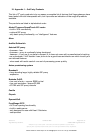
Version 2.1 16 March 2006 Page 22 of 33
Vega Gateway Scenarios. ©2005-2006 VegaStream Ltd.
Examples are given in best faith – ensure that you check the capabilities of systems before
deploying them, especially the functionality of devices not designed and delivered by VegaStream.
9. Analog connections
Where PBXs or incoming lines are analog rather than PRI or BRI, Voice over IP can still be used.
Care must be taken however, because unlike the symmetrical operation of digital interfaces –
where any information provided by one digital telephony device to the other digital telephony
device can also be passed in the opposite direction, analog signalling is not symmetric. The two
different ends of an analog line are called FXS and FXO. There are therefore two different types of
analog VoIP gateway interface, FXS and FXO. The choice of FXS or FXO interface will depend on
both what the gateway needs to connect to and also the functionality that it needs to support.
FXS: An analog PSTN line and an analog extension interface to a PBX are both FXS interfaces –
analog telephones may be directly into FXS interfaces.
•
It supplies a DC voltage to the line (around 48v).
• It alerts the attached device that there is a call available by supplying ‘ringing voltage’ on
the line. It does not provide any information about the number that was dialled to make
this line ring.
• Caller ID may be provided
3
; this is typically provided by an FSK (modem) tone burst
between first and second rings.
•
Typically it cannot indicate that the call has cleared, though there are extensions to the
analog signalling specification (loop current disconnect / battery stop & line current reversal
/ battery reversal) that do allow a physical indication of call cleardown.
• The FXS interface detects that a new call is being sent to it by detecting that a current,
‘line-current’ is flowing. This line current is triggered by the far end device going ‘off-hook’.
• FXS devices detect DTMF (Dual Tone Multi Frequency) tones which are used for dialling
telephone numbers.
•
FXS devices typically detect hook-flash (also known as recall); hook-flash is used by PBXs
and other telephony systems to alert them and trigger them to move into a command mode
(e.g. to initiate call transfer or conferencing when in the middle of a call).
• FXS devices detect the end of the call by loss of ‘line-current’ when the far end device
goes ‘on-hook’.
FXO: An analog telephone (which can plug into a PSTN line or plug into an analog extension
interface of a PBX) is an FXO device.
• It may use the line voltage supplied by the FXS line to power low current circuitry
•
It detects that an incoming call is being presented to it by receiving ‘ringing voltage’ – it
does not receive any indication of the number that was dialled for the call to reach here.
•
Caller ID may be received
4
; this is typically provided by an FSK (modem) tone burst
between first and second rings.
• If the FXS device supports loop current disconnect / battery stop or line current reversal /
battery reversal signalling, the Vega 50 FXO can be configured to detect call cleardown at
the end of the call – otherwise the call must be cleared from the VoIP side. (N.B. this
means that FXO to FXO calls – even across a VoIP link are not appropriate if neither
cleardown method is supported at either end).
• To initiate a call the FXO device goes ‘off-hook’ – actually it completes a circuit allowing
current to flow between the FXS and FXO.
•
To dial a telephone number the FXO device uses DTMF tones.
3
Vega 50 FXS supports Belcore sdmf and mdf standards, SPA-1001, SPA-2000, SPA-3000 support these and many others
4
Vega 50 FXO supports Belcore sdmf and mdf standards, SPA-2000 support these and many others
VoIPon Solutions www.voipon.co.uk sales@voipon.co.uk Tel: +44 (0) 1245 600560



